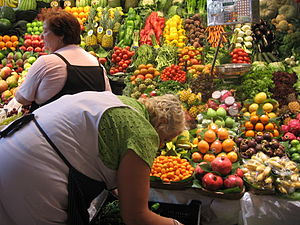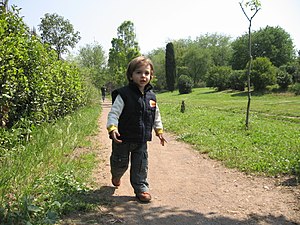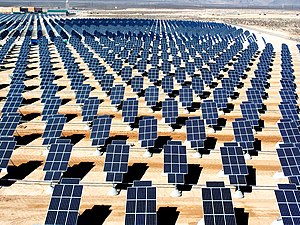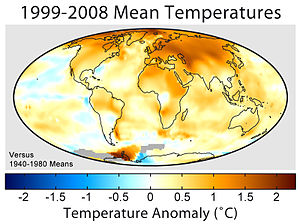The Dirty Dozen - 2011 (Originally Published by Healthier Talk.com)
Fourteen.
 Image via WikipediaThat, according to the Environmental Working Group (EWG), is the average number of pesticides you are likely to be unknowingly gulping down in an attempt to be healthy by eating your five fruits and vegetables per day.
Image via WikipediaThat, according to the Environmental Working Group (EWG), is the average number of pesticides you are likely to be unknowingly gulping down in an attempt to be healthy by eating your five fruits and vegetables per day. Of course, that’s if the produce you’re choosing happens to be on the EWG’s "Dirty Dozen" list of fruits and vegetables with the worst overall pesticide scores.
Last week, the EWG released the seventh edition of its Shopper’s Guide to Pesticides in Produce. And, as always, they’ve included handy "Dirty Dozen" and "Clean 15" lists based on the total pesticide loads for 53 conventional fruits and vegetables.
The pesticide data, gleaned from figures collected by the U.S. Department of Agriculture and the Food and Drug Administration, revealed some changes to last year’s lists, the ones that I wrote about in June of last year.
The bad news? The fruit I spoke so highly of just last week for its ability to help ward off cancer and diabetes...apples...has risen up the ranks three spots on the list to take over first place as the most-contaminated produce. And cilantro made its debut on the dirty list...just shy of the dozen at number 13...with 33 unapproved pesticides on 44% of the samples tested. (You can see the full list here.)
The good news? Delicious cancer-fighting cherries dropped off the dirty list. (Yay!)
The BEST news? According to the EWG’s careful calculations, we can slash our exposure to toxic pesticides by a staggering 92% simply by choosing fruits and vegetables from the clean list!
 Image via WikipediaBut keep in mind that the EWG is not encouraging us to shun the fruits and veggies on the "Dirty Dozen" list. There are way too many delicious and good-for-you items on it. Instead, they remind us to just be sure to choose organic produce whenever possible. While you will not be bringing your pesticide exposure down to zero, you’ll certainly be making a big dent in it.
Image via WikipediaBut keep in mind that the EWG is not encouraging us to shun the fruits and veggies on the "Dirty Dozen" list. There are way too many delicious and good-for-you items on it. Instead, they remind us to just be sure to choose organic produce whenever possible. While you will not be bringing your pesticide exposure down to zero, you’ll certainly be making a big dent in it. Oh, and in case you’re wondering if washing your produce will remove the pesticides, the answer is "maybe a little." But the fact is the fruits and vegetables used in the testing were already peeled (when appropriate) and carefully washed.
The fruits and vegetables that made the EWG’s "Dirty Dozen" this year are the following:
1. apples, 2. celery, 3. strawberries, 4. peaches, 5. spinach, 6. nectarines (imported), 7. grapes (imported), 8. sweet bell peppers, 9. potatoes, 10. blueberries (domestic), 11. lettuce, and 12. kale/collard greens.
And its "Clean 15" are the following:
1. onions, 2. sweet corn, 3. pineapples, 4. avocado, 5. asparagus, 6. sweet peas, 7. mangos, 8. eggplant, 9. cantaloupe (domestic), 10. kiwi, 11. cabbage, 12. watermelon, 13. sweet potatoes, 14. grapefruit, and 15. mushrooms.
And remember that to easily spot organic produce—in North America at least—you need to check the sticker on the fruit or vegetable.
Generally, if the five-digit number starts with a 9 it’s organic and if it starts with a 3 or 4 it’s conventional. (Although 8 was reserved for genetically modified foods, it’s rare to see it used since that unholy union of Big Agriculture and the biotech industry has fought labeling of any kind on GM foods.)





















